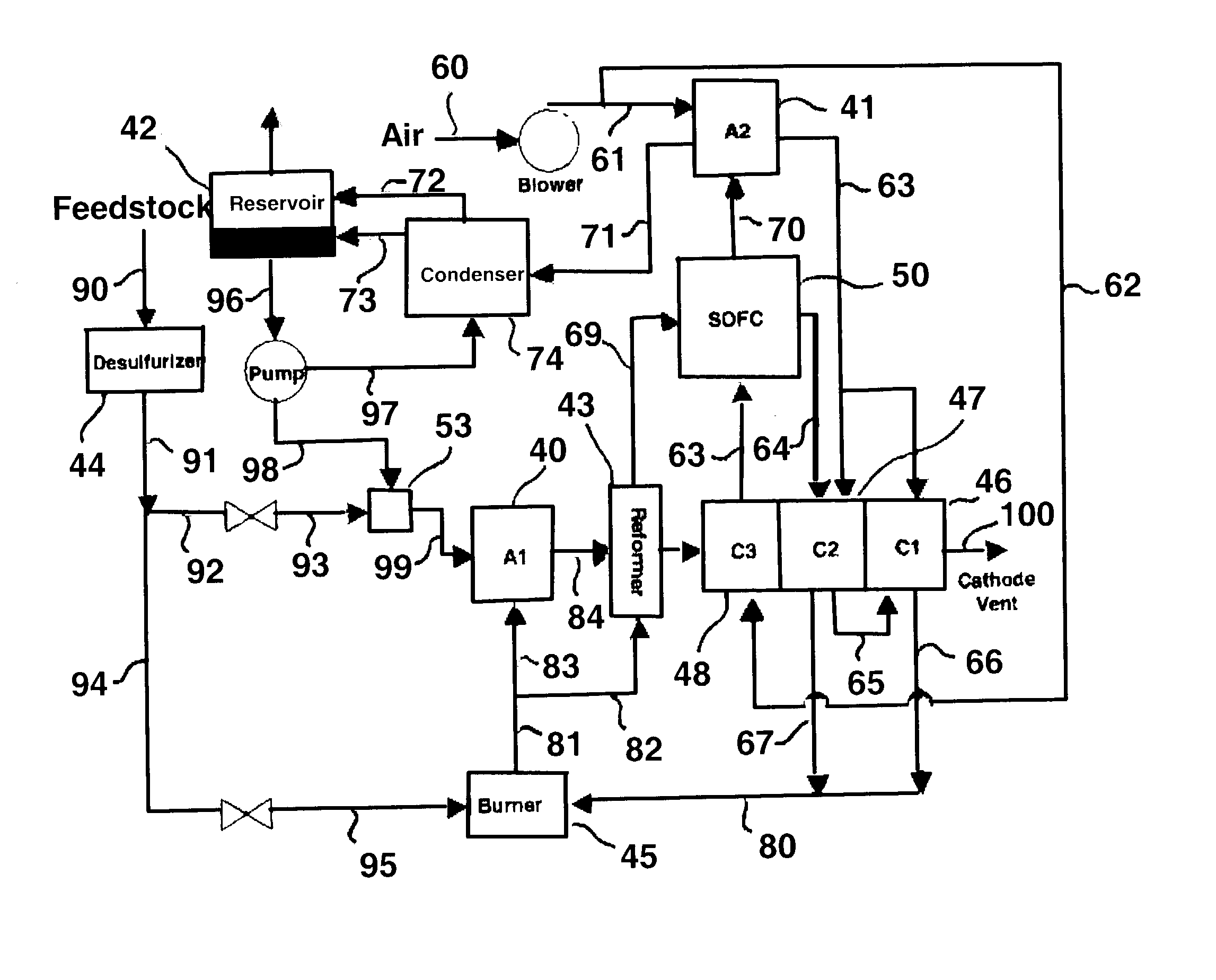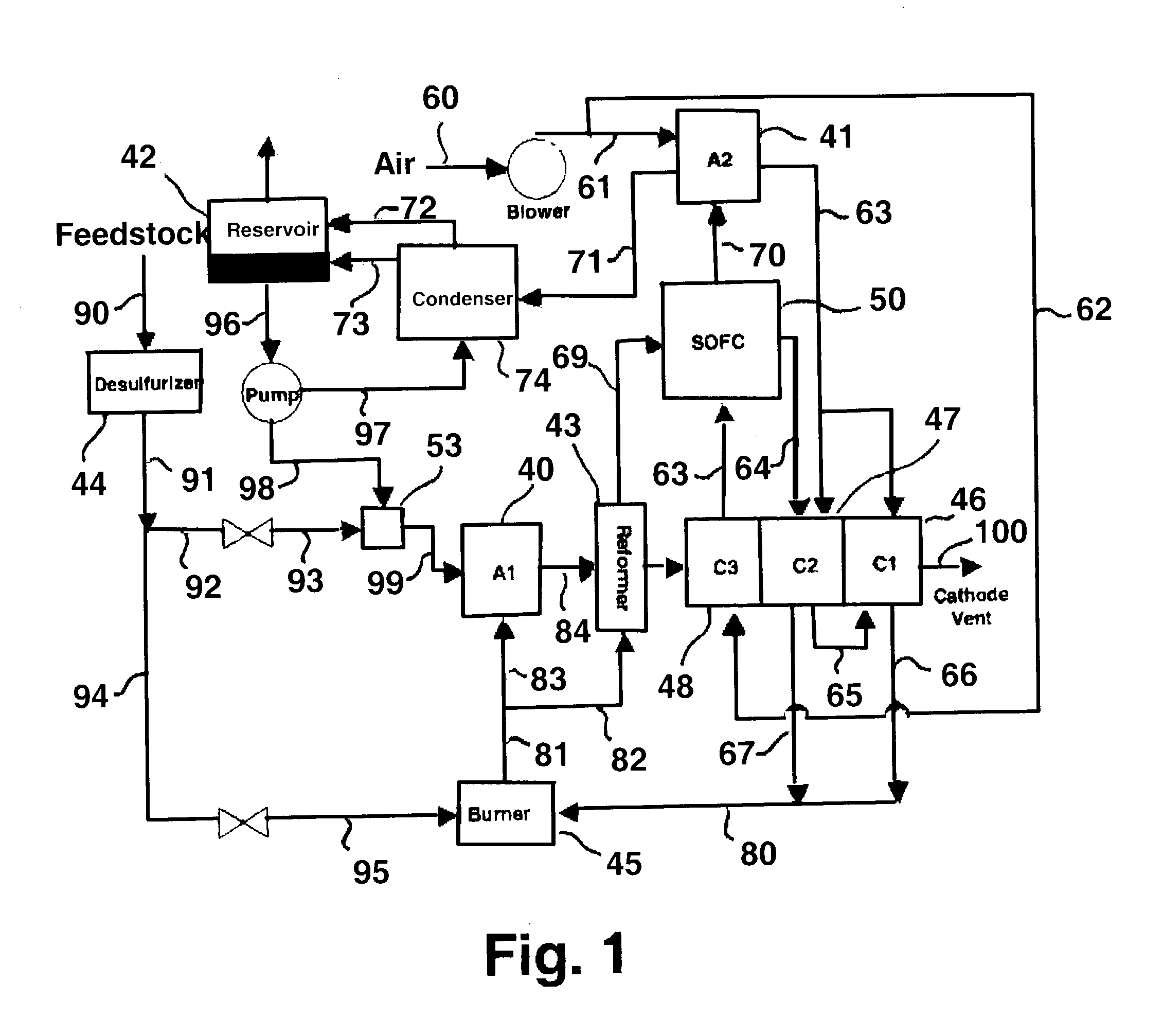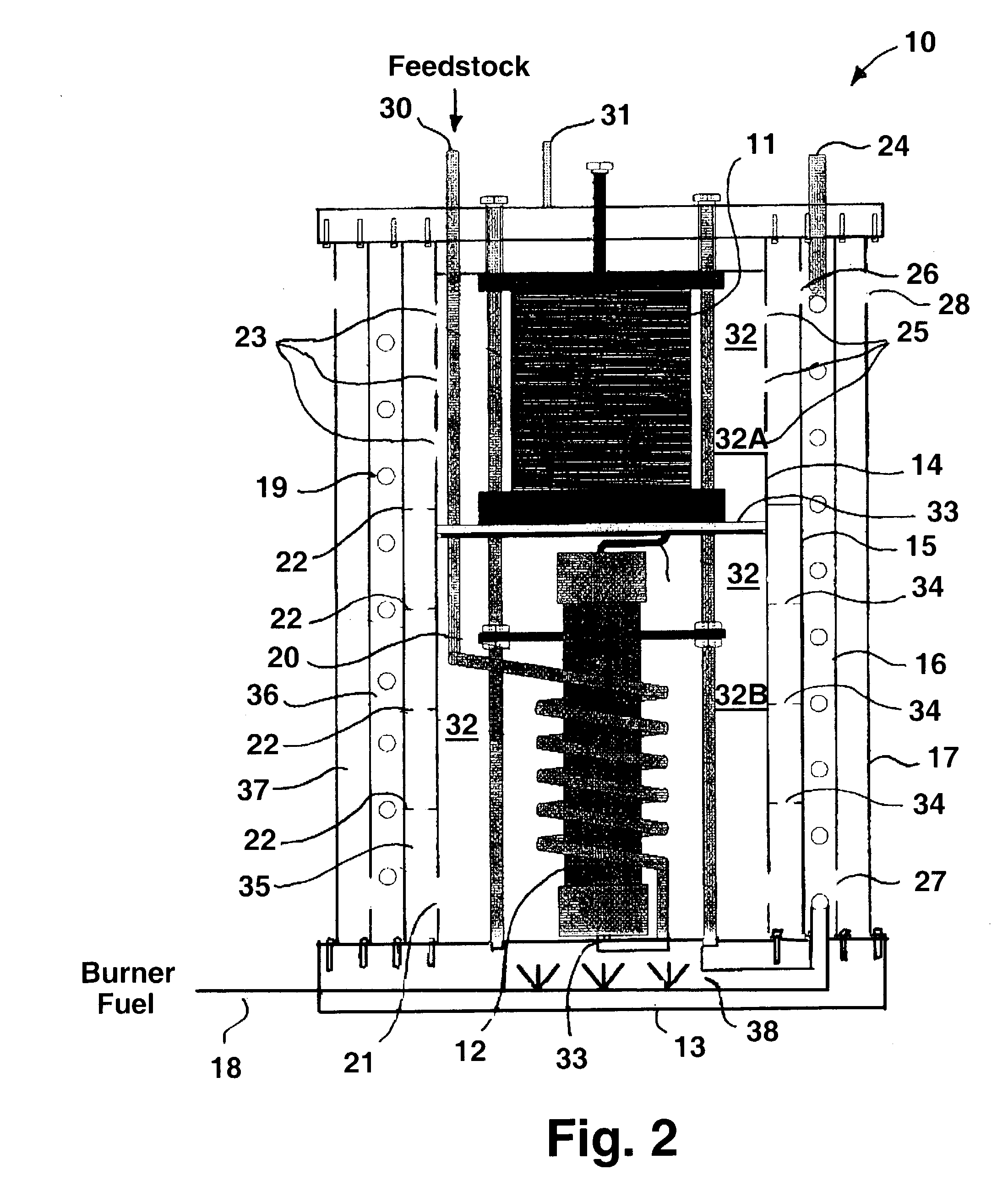Thermally integrated fuel cell power system
a fuel cell and power system technology, applied in the direction of fuel cells, fuel cell heat exchange, electrochemical generators, etc., can solve the problems of insufficient heat recovery, complex and costly fuel cell systems, and insufficient heat recovery
- Summary
- Abstract
- Description
- Claims
- Application Information
AI Technical Summary
Benefits of technology
Problems solved by technology
Method used
Image
Examples
Embodiment Construction
[0021] As previously stated, the basic approach of this invention is the thermal integration of system components in which the highest temperature components are located and enclosed within the core of the assembly. Concentric, or layered, walls can then be employed to accomplish any system heat management goal. For example, in accordance with one embodiment, the highest temperature of the fuel cell power system of this invention is maintained within the core and each subsequent annulus, ordered from the inside, or assembly core, to the outside is engineered to operate at a decreased temperature. In accordance with another embodiment, the highest temperature of the fuel cell power system is maintained in the core, but with the first annulus out from the core containing the coolest stream, for instance, ambient inlet air, to maximize heat removal from the fuel cell stack by means of a tailored combination of conduction, convection and radiation. Embodiments may also be employed to su...
PUM
| Property | Measurement | Unit |
|---|---|---|
| operating temperature | aaaaa | aaaaa |
| heat | aaaaa | aaaaa |
| chemical energy | aaaaa | aaaaa |
Abstract
Description
Claims
Application Information
 Login to View More
Login to View More - R&D
- Intellectual Property
- Life Sciences
- Materials
- Tech Scout
- Unparalleled Data Quality
- Higher Quality Content
- 60% Fewer Hallucinations
Browse by: Latest US Patents, China's latest patents, Technical Efficacy Thesaurus, Application Domain, Technology Topic, Popular Technical Reports.
© 2025 PatSnap. All rights reserved.Legal|Privacy policy|Modern Slavery Act Transparency Statement|Sitemap|About US| Contact US: help@patsnap.com



